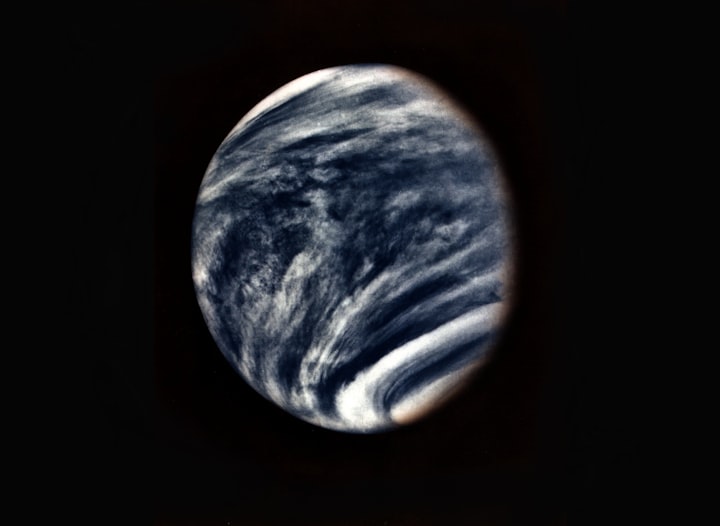The Latest Twist In The Life-On-Venus Debate?
The Latest Twist In The Life-On-Venus Debate?
Phosphine is considered a biosignature gas on Earth, meaning it is produced by living organisms. On rocky planets, conditions are so extreme that there is no known way to produce phosphine in the absence of life, but the process is extremely demanding. In other words, the observations of phosphine on Venus are just right to replenish molecules in the atmosphere of a planet.
Life could exist on Earth, or at least that is the claim that has been making headlines around the world since September by claiming possible signs of a gas called phosphine in Venus "atmosphere. However, the researchers remain divided over the possible discovery of phosphine on Venus and the consequences for life on the planet. Astrobiologist Dirk Makuch from the Technical University of Berlin, who studies cloud-based Venus life, agrees that a biological explanation for phosphine is possible, but believes other, as yet unknown geologically induced chemical reactions are possible.
A new research report offers an explanation that does not depend on the presence of phosphine, destroying the entire theory that life could exist on Venus. The discovery that there is probably phosphine in the atmosphere of Venus has sparked a debate about the possibility that life could exist on the planet. On Earth the naturally occurring phosphine is produced by microbial life, but astronomical observations of a gas called phosphine, reported Jane Greaves and colleagues of University of Cardiff in the UK, opened the door to speculation that microscopically small Venusians could float in the planet's clouds.
Two papers have dealt a new blow to the idea that Venus contains phosphine, a gas that is a potential sign of life. A new research report suggests that what scientists have seen in Venus "atmosphere sulfur dioxide, known to be abundant on planet - does not indicate the existence of life at all. An international group of scientists has reported the detection of small amounts of gas in the atmosphere that they believe is a sign of biological life on Venus.
The deadly billowing clouds that envelop Venus are a stinking, combustible gas called phosphine that can destroy life forms that rely on oxygen for survival. The idea that the Venus atmosphere could contain phosphinga - a potential sign of life - was around on the planet even before the rocks were first shaken by planetary research last September, when researchers reported discovering it in spectral signatures in telescope data. If confirmed, this would mean that organisms drifting through Venus clouds could release phosphine.
Scientists today announced the sighting of a smelly, flammable gas called phosphine, which could wipe out organisms relying on oxygen to survive in the Venus atmosphere, saying it is tantalising but controversial evidence of life on the next door planet. In September, a team of scientists reported finding evidence of the toxic gas in the planet's atmosphere. Phosphine could not survive long in the atmosphere without its supply.
Two planetary scientists analyzed laboratory data on the phosphorus chemistry and calculations of volcanic and atmospheric activity to see if there is a non-biological explanation for phosphine above Venus. They found that volcanism on Venus could bring small amounts of a compound known as phosphide from a deep mantle layer to the surface of the planet. They suggested explosive volcanic eruptions could spew phosphine into the atmosphere.
Art print of Venus after confirmation of a phosphine atmosphere. The announcement of the discovery of phosphingases in the atmosphere of planet Venus by an international astronomical team on Monday triggered worldwide excitement about the possibility of living beings on the planet.
The search for life on other planets received a major boost after scientists discovered the spectral signature of more than 1,000 atmospheric molecules involved in the production and consumption of phosphine, according to a study led by UNSW Sydney. Phosphine is produced by industrial processes and is a colorless, smelly gas that allows bacteria to survive in the absence of oxygen. In a paper published in Nature Astronomy, an international team of astronomers reports traces of the gas at concentrations of up to 20 parts per billion, a thousand to a million times higher than previously expected.
An international team of scientists claimed in last year to have detected phosphine in the Venus "atmosphere," a claim that raised the tantalizing prospect of the first detection of life on a primitive, single-celled planet. The scientists suspected that phosphine, a chemical compound of a phosphorus atom surrounded by three hydrogen atoms at pH 3, could offer clues to life as found in the atmosphere of small rocky planets such as ours, and that it could be produced by biological activities of bacteria.
The team that made the original phosphate discoveries was interested in making follow-up observations to verify their results. But this did not convince some scientists, who doubted that the phosphine in Venus "atmosphere could generate the biological activity for which it was detected.
The independent researcher, NASA's Stratospheric Observatory for Infrared Astronomy (Sofia) telescope, Chile's Very Large Telescope and the European space agency BepiColombo which flew past Venus on its way to Mercury plan their own Phosphine surveys.
Phhosphine is associated with living organisms on Earth, but Venus is an extraterrestrial planet and scientists do not yet understand its many complex details. As the ruling body in the solar system, the Supreme Court of Astronomy must make a final decision on phosphine on Venus.
The recent twist in the Phosphine debate dampens the case slightly for life on Venus, but could help scientists search for other earth-like planets that could potentially host life orbiting different stars. After a groundbreaking discovery last year in which scientists claimed that there was clear evidence that Venus could harbor life in its clouds through phosphine, Lunine and his team began to explore alternative explanations for the telltale gases. Using observations from the ground James Clerk Maxwell telescope in Hawaii, the Atacama Large Millimeter Array in Alma in northern Chile, they created a Venus model in which the planet shows no volcanic activity.






Comments
There are no comments for this story
Be the first to respond and start the conversation.